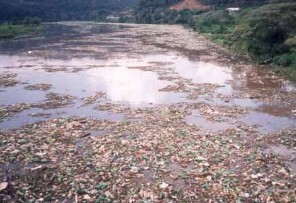Located in the Brazilian Midwest, Mato Grosso is the largest state in terms of land area in the region and the third largest in the country. Its area is 903,329,700 square kilometers, and borders the states of Goiás (to the east), Tocantins (the northeast), Pará (to the north), Amazonas (to the northwest), Rondônia (to the west), Mato Grosso do Sul (to the south), in addition to the Bolivian country (to the west).
The states of Mato Grosso and Mato Grosso do Sul formed a single federative unit. However, the federal government decreed the division of the state in 1977, as there was great difficulty in promoting economic development in the region due to its great extension. With the fragmentation of the territory, two new states were created: Mato Grosso, to the north; Mato Grosso do Sul, to the south.
The territorial extension of Mato Grosso is 903,329,700 square kilometers, which corresponds to 10.6% of the Brazilian territory. According to the Brazilian Institute of Geography and Statistics (IBGE), the population of Mato Grosso in 2010 totaled 3,035,122 inhabitants, with the majority residing in urban areas – 82%. The population density of the state is the lowest in the Midwest – 3.3 inhabitants per square kilometer and the population growth is 2.4% per year.
Mato Grosso has 141 municipalities, whose state capital is the city of Cuiabá, inhabited by 551,098 people. The population is unevenly distributed, with demographic gaps in the northern portion and populated urban areas such as Cuiabá and Várzea Grande (252,596 inhabitants).
The relief is characterized by being little uneven, composed of plateaus and plateaus in the center, with altitudes between 400 and 800 meters, plain with swamps to the west, depressions to the south and residual plateaus to the north. The highest point in Mato Grosso is the Monte Cristo mountain range, which has an altitude of 1,118 meters. The state vegetation comprises the cerrado in the eastern portion of the territory (40% of the state area), Amazon forest in the northwest, and wetland to the west (10% of the territory).
Do not stop now... There's more after the advertising ;)
The main rivers in Mato Grosso are: Araguaia, Cuiabá, das Mortes, Jurema, Paraguay, São Lourenço, Teles Pires, Xingu. With regard to the climate, this is represented by the tropical.
The state economy is linked to agriculture. Such activity is responsible for 28.1% of the Gross Domestic Product (GDP) of the state; the service sector, which represents 55.5%, is extremely dependent on agriculture. Mato Grosso is the largest national cotton producer – Of the 35 largest cotton producers in the country, 20 municipalities are from Mato Grosso. Also noteworthy is the production of cereals, legumes and oilseeds.
However, the expansion of agriculture, mainly for the cultivation of soy and cattle raising, is largely responsible for the destruction of the environment. According to a survey carried out by the National Institute for Space Research (INPE), between 2001 and 2004, 38 thousand square kilometers of Amazon forest were deforested.
The Human Development Index (HDI) of Mato Grosso is 0.796, occupying the 11th position in the national ranking. The literacy rate is 89.8%; the sewage network benefits only 53.4% of homes; 74% of them have treated water.
The infant mortality rate is the highest in the Midwest – 19.2 deaths per thousand children born alive.
The main cultural manifestations are: Cururu, Siriri, Rasqueado Cuiabano, the Boi, the Serra, the Dance of São Gonçalo, the Dance of the Masquerades, the Chorado and Congo.
By Wagner de Cerqueira and Francisco
Graduated in Geography

